UpLift V2-Commercial Standing Desk Review
- Lab tested
Like most reviews sites, our editorial staff and laboratory testing expenses are partially offset by earning small commissions (at no cost to you) when you purchase something through those links. Learn More

Overview
| Review Summary |
The V2-Commercial carries over the standard V2’s negatives and adds a couple of its own—a crossbar, plus limited maximum height for taller and treadmill users. Outside of a few very specific scenarios, there’s no reason to pick the V2-Commercial over the standard V2. |
|---|---|
| Best Use |
If you’re a very short user or your organization absolutely requires compliance with the outdated ANSI/BIFMA G1-2013 Ergonomic Guidelines. |
| MSRP / List Price | $679 |
| Street Price | Scan for available discount deals |
| Warranty |
15 years on the frame and desktop |
| Lift Type |
Dual-motor Jiecang electric base (Chinese-made) |
| Transit Speed |
1.57 inches per second claimed. We got 1.4 ips in the lab test. |
| Controller |
Three options: |
| Sizes Available |
42″, 48″, 60″, 72″, 80″ wide. Only 30″ depth is offered. |
| Adjustment Range |
Height range: 22.6″ with 1″ desktop – 48.7″ with 1″ desktop |
| Weight Capacity |
355 lbs claimed by UpLift. We noticed motor strain beginning at about 250 lbs in lab testing, however. |
| Noise Level |
50 dB |
| Product Weight |
The V2-Commercial base weighs 93 lbs. Desktop weights obviously vary by size and type. |
| Power Consumption |
Undisclosed |
| Typical Assembly Time |
60-90 minutes after unpacking. May take less time if you have a cordless screwdriver, raised surface to work on, and some mechanical skills. Having a helper will be useful during certain parts of the installation. |
| ANSI/BIFMA Certified |
UpLift claims X5.5-2014 ANSI/BIFMA certification, though it specifies it passed “all applicable sections 4.3, 4.4, 4.6, 5.2, 5.3, 5.4, 5.5, 6.0, 7.0, 8.0, 15, and 18.” We’ve been unable to obtain a copy of the independent lab report from the company to verify this. The V2-Commercial is compliant with the ANSI/BIFMA G1-2013 Ergonomic Guidelines. |
| NEAT™ Certified by Mayo Clinic |
No |
| Competition |
Compare to All Top-Rated Standing Desks
|
| Where to buy |
Buy on Amazon |
Rating
| Ease of Assembly | |
|---|---|
| Stability | |
| Reliability | |
| Customer Experience | |
| Innovation | |
| Value | |
| Positives | The V2-Commercial will fit some very short users that couldn’t make the standard V2 work. The crossbar adds a great deal of lateral stability at lower heights. There are many different desktop options to pick, from the inexpensive (rubberwood, bamboo, HPL) to expensive solid hardwoods. In a competitive marketing move UpLift has recently upped their warranty to 15 years on the frame and desktop, though it does have many exclusions. |
| Negatives | The crossbar is ugly and cumbersome, without providing any useful longitudinal stability improvement. This desk won’t work for many taller users and isn’t practical for use with an under-desk treadmill. Issues with the Jiecang base remain as not everything fits quite right, leading to a difficult assembly that will take most users more than an hour. While the longer warranty is a great marketing move to try and keep up with the Joneses (chiefly American-made standing desks), UpLift hasn’t fundamentally changed its frames or its desktops, so caveat emptor, it doesn’t mean the product is suddenly more durable than it was before. |
Bottom Line
[Editors Note: Pay careful attention when ordering a V2 or V2-Commercial and selecting desktop options. As a consequence of enduring Covid-related supply chain disruption from China many options are delayed, with some approximate shipping dates stretching as far three to four months out.]
Review
UpLift brought out their new V2 desk line based on a revised Jiecang base in 2019. While we’ve already reviewed the standard V2 here, this review will cover the V2-Commercial. We’ve reviewed various versions of the original UpLift Desk line through the years and—while very popular—there have been persistent issues with product quality that are frankly endemic to all commodity standing desks that are manufactured in China these days. Assembling the desks has also been an issue, largely due to the product quality inconsistencies and low machining tolerances.
What Sets the V2-Commercial Apart?
When UpLift revved their highly popular standing desk to “V2” it created two versions, the “Standard” version most consumers will buy and this pricier (+$80) “Commercial” version that likely only some large corporations and government agencies would be required to choose due to outdated purchasing policies requiring compliance with the ANSI/BIFMA G1-2013 Ergonomic Guidelines.

The V2-Commercial has an ever so slightly greater height-adjustment range (“stroke”) of 26.1” versus the standard V2’s 25.6”. This half-inch difference is truly immaterial. The more salient difference is that the V2-Commercial frame starts nearly 3” lower, theoretically fitting a range of users from extremely short individuals to those 6’3” in stature.
This design alteration was a necessary throwback to meet the outdated and woefully insufficient ANSI/BIFMA G1-2013 standard, instead of fitting the largest number of office workers (see below). The V2-Commercials’ maximum height is 2.7” lower than the standard V2. Many taller users who thus maximize the extension of the three-tube lifting columns will discover a pretty shaky user experience as a consequence.
The low maximum height will be even more problematic if you plan on installing an under-counter keyboard tray or if you’d like to use the V2-Commercial as part of a treadmill desk—something we wouldn’t recommend due to the desk’s weak longitudinal (front-to-back) stability, which you can read more about below.
Adding an under-desk walking treadmill to your workstation necessitates an additional 6” of height, meaning in the case of a treadmill desk, the tallest user the V2-Commercial can theoretically accommodate drops to 5’9”. In practicality, it wouldn’t work well at all for the statistical majority of male users and a substantial minority of female users.
This highlights the issues with the ANSI/BIFMA G1-2013 standards and the dire need for an update. These standards were developed by a self-regulating cabal of dues-paying office furniture manufacturers—based on 2010 census data on the height of average Americans (not average American office workers, who trend much taller) and the inferior linear actuator technology available at the time. The V2-Commercial was made to fit these standards and while it technically does so, it practically reduces the stability of the desk for tall users.
Of course, there’s a positive on the other side of this fit. The V2-Commercial goes nearly three inches lower than the standard V2, meaning very short users should be able to fit more easily. But we’re talking about kindergartener’s desk height here, literally 21.6”. Which, by the way, you can more easily achieve by adding an under-counter ergonomic keyboard tray to a more current desk design. There will be some drawbacks, mainly the crossbar, which we’ll discuss later.
Why Does ANSI/BIFMA Matter?

This seems like an appropriate time to recap what ANSI/BIFMA “certification” means. ANSI/BIFMA X5.5-2014 for sit-stand workstations is a robust process that involves independent laboratory testing by cycling the product thousands of times over the course of weeks. Robotic sensors and actuators will simulate a user making the desk go up and down repeatedly, making it shake back and forth, and trying to make it tip over. The lab will push the desk to its extremes to try and make it fail the standards. Weak products will be trashed by the end of the test run, if they make it that far.
X5.5-2014 certification is chiefly the domain of traditional commercial office furniture manufacturers, such as Steelcase and Herman Miller, that charge 2-3x more for their products for the privilege of ANSI/BIFMA certification. It is more than a Good Housekeeping Seal of Approval for office furniture, it does guarantee durability many times better than you can expect from, say, IKEA furniture.
To be certain, 99+% of online buyers have no idea what ANSI/BIFMA is, nor do they care, unless they happen to be purchasing agents at a large enterprise organization that requires it. E-commerce sellers that produce their standing desks in China, including Fully, Autonomous, StandDesk, et al, never bother with attempting to get their products certified.
UpLift is one of only two e-commerce sellers (the other being iMovR) that do. However, UpLift’s certification report is not available on their website nor were we able to obtain a copy of it from their customer support representatives. And at that, UpLift has only selectively “passed all applicable sections 4.3, 4.4, 4.6, 5.2, 5.3, 5.4, 5.5, 6.0, 7.0, 8.0, 15, and 18”, according to their website.
The ANSI/BIFMA G1-2013 Ergonomic Guideline, on the other hand, is not a “certification.” It pertains only to the ergonomic recommendations for dimensions of virtually every office furniture product you can imagine, from chairs to file cabinets, and yes, sit-to-stand desks. Standing desks are recommended to be adjustable from a minimum height of 22″ to a maximum height of 46.5″. This is supposed to accommodate 90% of the US population based on the 2010 census survey, from the 5th percentile of women to the 95th percentile of men. In contrast, the European standard is 3″ higher than the American, and in our considered estimation, after nearly a decade of reviewing stand-up desks, is more correct and practical than BIFMA’s prescribed range.
A Crossbar and More
Another difference from the standard V2 is the V2-Commercial’s crossbar. In modern standing desks, a crossbar is often akin to a prosthetic or at least a bandage for less-than-ideal desk design. Crossbars can also be a real pain. There’s a reason they have been called “shin crushers” or “knee crushers.” It’s another large, heavy metal piece potentially in your way when changing positions or placing things like file cabinets or computers under the desk.
A standard component of a standing desk frame ten years ago, 99% of modern-day workstations have a hidden crossbar running underneath the desktop, out of site and out of mind. This parallelogram-strengthening element of the V2-Commercial is again a throwback to when linear actuators were a lot sloppier in their machining tolerances and the extra metal was needed to stabilize the frame laterally (i.e. from shaking side-to-side).

There are more differences in the feet and legs. The V2-Commercial has beefier legs, 35 percent larger in cross-sectional area than the standard V2’s. The feet are also differently shaped for the V2-Commercial, with a lower profile that likely helps reach the lower height setting. The feet, like the legs and the crossbar, are very heavy and sturdy. The V2-Commercial as a whole is noticeably heavier than the standard V2, weighing in at 93 lbs, compared to 68 for the standard V2.
It’s All About the Base
Meghan Trainor said it. As mentioned above, the V2-Commercial and standard V2 are made with a Jiecang-manufactured base. The motor drive is better on the revised base and while there are still cost-cutting shortcuts in quality usually expected with a Chinese-made desk, the performance has moved up a half-notch due to the motor.
Another differentiating feature of the new base is the introduction of 48 mounting points along the frame for attaching accessories. UpLift offers a variety of attachments, including CPU holders, desk extensions, and power strips. Unfortunately, you’re out of luck if you were craving the under desk hammock that’s available on the standard V2. It won’t work on the V2-Commercial because of the crossbar. (But don’t be too disappointed. The gimmicky hammock will wreak havoc on the delicate lifting column glides and you have to be really short to fit in one.)
The V2 desks still exhibit some of the same significant shortcomings as their predecessors. There is still the propensity for the “glides” between the leg segments to wear down and for oil slicks to run down the legs after absolutely minimal use (these streaks show least on silver legs, more visible on black and white). Compared to other Jiecang-manufactured lifting columns on some competitors’ desks we still observed very heavy grease packing and the opportunity for dirt to contaminate the gears. At this price point we wouldn’t expect it.
UpLift lists a transit speed of 1.57” per second for the V2-Commercial. Our lab testing was a little short of that for an unloaded desk.
How Stable is it?
While the standard V2’s stability issues were easy to blame on very lightweight feet, we had higher hopes for the V2-Commercial because of the much heavier feet and additional crossbar. These changes did help in certain situations. Lateral (side-to-side) stability on the V2-Commercial was very good at lower heights. Longitudinal (front-to-back) stability was also solid when the desk was lowered.
The issues arose when elevated. In this state, the V2-Commercial exhibited quite a bit of longitudinal wobble, even under normal or light typing, let alone leaning. Compared with the standard V2, we surprisingly found the V2-Commercial to be similar or slightly less longitudinally stable.
As with any standing desk, the effect would be exaggerated with any keyboard tray extending beyond the normal desktop edge creating an even longer “moment lever.” Keyboard tray or not, expect a shaky monitor when standing if you’re an average or taller user. This particular shortcoming, coupled with the less-than-ideal height restriction, means the V2-Commercial will definitely be problematic for tall users.
We rated the standard V2 as a middle-of-the-road performer in stability and that’s where the V2-Commercial fits in overall. The crossbar definitely improves lateral stability, especially when lowered, but that’s much less important than longitudinal stability because of how people use and put stress on standing desks. A proper ergonomic standing desk workstation will always have a monitor arm or two, and that longitudinal instability is bound to amplify the typing-induced oscillations in wobbly display monitors.
Anti-collision detection went from too-insensitive to overly sensitive
We tested the desk without any load as well as at the full rated lift capacity of 355 lbs. At first, we couldn’t get the desk to move up and down more than a few inches at a time before the hyper-sensitive anti-collision sensor kicked in, de-energized the motors and backed off an inch. Each time we tried to move the desk up again it would gain a few inches and the sensor would trigger once again. We then double checked that the feet were perfectly leveled and the unloaded desk worked more or less correctly from that point forward. Since most users don’t even bother to perfectly level their desks (and don’t realize how uneven most floors are) the collision detection circuit seemed highly over-sensitive.
It is not uncommon for anti-collision sensors (even those with a G-Force sensor integrated, like UpLift’s) to falsely trigger on very wide, heavily-loaded desk,s but we were testing a very standard 30×60 desktop configuration. Even after perfect leveling, the slightest tap of a finger anywhere on the desktop caused the sensor to trigger. We searched the user documentation and FAQs on the UpLift website to no avail and eventually had to contact UpLift’s customer support. They had us check all the cable connections, which were solid, and then offered no further help in resolving the matter other than to reluctantly offer to swap out the controller.
What we learned in this conversation with the company is that the sensitivity setting is factory set, and we supposedly received their latest controller software. Which perhaps was not thoroughly tested before being put into production. The support agent did admit that it’s not uncommon for customers to complain about the new 6-axis collision detector being too sensitive.
There turns out to be no user-programmable sensitivity setting for the anti-collision current sensor nor for the G-Force sensor. As we detail in our primer on Anti-Collision and G-Force Sensors, it is not uncommon for standing desks to fail to trigger when hitting an object despite all this technology, but we’ve never seen one falsely trigger so many times, with ever the slightest finger tap on the desktop.
The good news in the anti-collision/anti-tilt department is that the digital handset can be “locked out” so that unattended children don’t play with the desk until it breaks, crushes a smaller sibling or pet, or tilts over and crashes from colliding with an obstacle.
Constant-touch versus one-touch
UpLift likes to promote their “one-touch” height-change feature in their video ads, a.k.a. “fire-and-forget” control. While the controller is user-programmable to select between “one-touch” and “constant-touch” (meaning the user must keep their finger on the height preset button the entire time the desk is in motion), the desk ships with the default set to one-touch.
While that sounds great… after all, who wouldn’t want to take their finger off the button and let the desk get to its new assigned height on its own?… there is a safety consideration as well as a legal consideration. As we go into in great depth in our primer on anti-collision sensors, were the desk to hit an obstacle and not automatically sense it and stop there could be damage to equipment and possibly even injury to individuals (especially unsupervised children). In a commercial, government or educational setting there is also the legal consideration that for UL-approved use in the United States, as opposed to China where these desks are made, the settings must be left on constant-touch.
The good news is that you can easily reprogram the desk to constant-touch if that’s how you’d like to have it or if your employer’s legal policies require it.
UpLift did have a Bluetooth-enabled hand controller and smartphone app, but it appears to have been pulled. UpLift says on their website that they are working on an updated version of the app because the previous version “is not working properly with regards to desk connection and notifications, as well as a few other issues.”
In our testing of standing desk smartphone apps, the most common failures we have seen are the result of insufficient testing of multiple users and/or multiple desks in the same BLE (Bluetooth Low Energy) signal range. This is very tricky engineering for furniture companies to conquer and has led to several early apps being pulled from the market for revision.
The app also requires you to purchase the UpLift Connect Dongle to work with your desk, but the link for the dongle goes to UpLift’s generic accessories page. The dongles can be found on third-party sites, though we’re unsure if it’s worth the price since the app was clearly not up to par.
Desktop Surfaces and Options
The V2-Commercial comes in 21 different options for desktops, including three with an Eco Curve cutout. The shallow cutout is about 42” wide and about 3” deep. We found the cutout to be comfortable to lean on, but not very necessary. Keep in mind that two of those desktop options, rubberwood and bamboo, are touted as environmentally-friendly while being entirely the opposite. Read more about bamboo in our comprehensive report. Other options are reclaimed wood, solid wood, and “GREENGUARD-Gold certified” laminate.
GREENGUARD-Gold is simply old-school high-pressure laminate (HPL) that’s been around for a long time and is found on most office desks. This is lamination on the top and bottom, with matched edge banding all around. The big problem with HPL is that air and moisture will eventually get into the open seams and the edge banding will start to peel off. One interesting option is UpLift’s whiteboard top. We didn’t test this top, but it could be helpful for the right person. All of the desktops come in a limited selection of only five size options: 42” x 30”, 48” x 30”, 60” x 30”, 72” x 30”, and 80” x 30”.
The frame itself can accommodate desktops from 42” to 80” wide and comes in four colors: Black, white, gray, and “industrial style”—which is basically the dark gray patina of unpainted raw steel.

Our test desktop was a dark carbonized bamboo. It arrived with a scratch and scuff mark on the desktop edge, which could have been from shipping. Both grommets were not fully finished around the inside and not sealed from water damage, with noticeably lighter and rougher portions on the side toward the front of the desk. This may not seem like a big deal because it’s not visible from the front, but it leaves the desk vulnerable to internal disintegration if liquid is accidentally spilled into a grommet.

The handset controller on the UpLift V2 desks comes in three flavors. The basic product comes with a simple two-button up/down switch. The advanced digital controller they sent us is a rather pedestrian plastic button affair, with a clear, white digital readout showing the height setting to a tenth of an inch, and four programmable height memories, at an upcharge of $29.
The only issue with the handset design is that the face of the handset is vertical, making it a little hard to see the display and touch the correct button from the standing position. To cure this they do offer an “advanced comfort” digital version for $10 more that comes out at an acute angle to the desktop, like most standing desk controllers. Definitely opt for the comfort version if you go with the digital controller.
Be sure to check out our review of UpLift’s cable management kit options to complete your workstation setup. There are also the UpLift Monitor Riser shelves to add some extra storage on your desktop.
Packaging

The UpLift V2-Commercial arrives in multiple boxes. This makes them easier to handle, though it increases the chances not all of the boxes will arrive simultaneously. UpLift has cleverly put a graphic of a TV on the box, letting everyone know to handle the boxes carefully. All components of the UpLift V2-Commercial arrived at our offices correctly, with the only damage being a scratch and scuff mark on the desktop edge. However, many users in their verified-buyer posted reviews noted that their products arrived damaged and even missing pieces. The damage ranged from the legs being scratched and chipped, to a large number of complaints about gashes, chips, and dents on desktops.
About the Assembly
We were eager to try assembling the V2-Commercial after seeing a range of assembly reports on the standard V2. One of our experienced staff members assembled the standard V2 in about 45 minutes, while UpLift has a video demonstrating one of their employees assembling it in about seven minutes. Remember, even though the V2-Commercial is a different desk, it’s not that different. Heavier pieces and an additional crossbar should be the only differences for assembly.
As you can see in the video below, it took one of our new staff members over an hour to assemble the V2-Commercial (he had never built a standing desk before but had an engineering background). The biggest issue was bolts and pieces not fitting together exactly right due to some bolt holes having paint inside and manufacturing tolerances not being quite as tight as ideal. Definitely plan on using a cordless screwdriver with a bit set if you have one, as it will be much easier than getting all the bolts in by hand.
Two bags of bolts were unlabeled, leading to momentary confusion. This would have been much more confusing if it happened near the beginning of installation when there were many more types of bolts laying around.
The crossbar installation is also something many users may not be able to do by themselves. It involves holding the heavy crossbar in a specific spot while getting the bolts started in holes.
About The Warranty
While UpLift does provide a 15-year warranty on both frame and desktop, it’s not without several asterisks. The warranty exclusions include normal wear and tear over time, hairline cracking due to changes in temperature and humidity, and changes in surface finish due to aging or exposure to sunlight. The warranty is reduced for anything beyond 8 hours of use per day and 40 hours of use per week. It’s also excluded if the assembly is improper, which is especially problematic on a difficult assembly like this desk.
Essentially this 15-year warranty on the desktop can be explained away for many different reasons. For more information on warranties, be sure to read our primer on How to Compare Warranties on Standing Desks.
The Takeaway
There’s no denying UpLift has been massively successful in selling enormous volumes of commodity Chinese-made standing desks, if not the most successful in the industry (Fully being a likely close second). But it is what it is, built at the lowest possible cost and cutting as many corners as possible to attract budget buyers.
For all the fanfare of “V2,” the enhancements over the prior version of the Jiecang base are just not that meaningful. In terms of desk performance, barely detectable. The accessory mounting points are clever but most users won’t find a significant benefit from them, and while the 6-axis anti-collision works better than on the predecessor it is annoyingly oversensitive. Assembly is just as time consuming and frustrating as before, despite the company’s incredibly exaggerated claim that it can be accomplished in only 7 minutes.
We were expecting the V2-Commercial to be much more stable than the standard V2 because of the added crossbar and overall heft, but that wasn’t the case outside of lateral stability at low heights. Because of this, there’s no way the positives of the $80 crossbar upgrade outweigh the negatives.
While we understand UpLift designed this desk specifically to meet the ANSI/BIFMA G1-2013 standard, this change is a negative if you don’t need to meet that standard to buy standing desks at your workplace. This change lowers the height range, limiting the usability for tall users. The change also makes the V2-Commercial unusable as a treadmill desk for a large portion of users.
One thing that definitely hasn’t changed is UpLift’s hyperbolic marketing claims, from greenwashing their environmental footprint to claiming performance specifications that we couldn’t replicate in the lab.
Meanwhile, other standing desk offerings under $800 continue to advance in quality, technology and consumer value much faster than UpLift has managed to with this new revision, and in particular when compared against premium-quality American-made standup desks that are a lot less expensive than you might think. If you decide to opt for an UpLift desk we recommend buying it through Amazon for their more liberal return policy (although it’s not a “Prime” item so you’ll be paying for return shipping either way).
It all boils down to this: There are only three very specific reasons to buy the V2-Commercial over the standard V2. One, you must meet the ANSI/BIFMA G1-2013 standard to purchase the desk. Two, you require greater lateral stability at low heights. Three, you’re a very short user who is willing to deal with the V2-Commercial’s crossbar instead of getting an elevated footrest or installing an under-counter keyboard tray and using the standard V2. Outside of those reasons, the V2-Commercial comes in as a somewhat clunkier cousin to the standard V2.
This desk does come with a grommet design. Check out our article on grommet holes, with everything you need to know about the different ways to use them to enhance your workstation, what to look for in your grommet holes, and where to find the desks with the best ones.
Many standing desks and converters come with grommets for some added convenience. Check out our article on grommet holes for everything you need to know about the different ways to use them to enhance your workstation, what to look for in your grommet holes, and where to find the desks with the best ones.

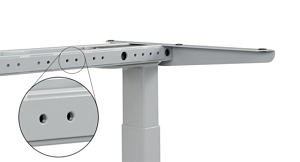
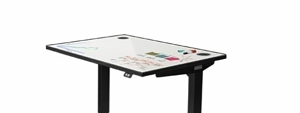

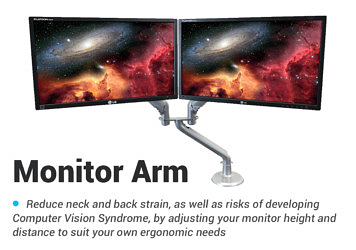
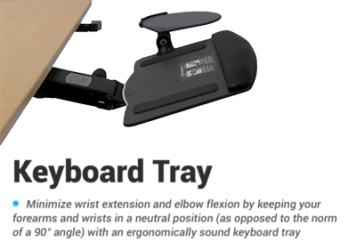
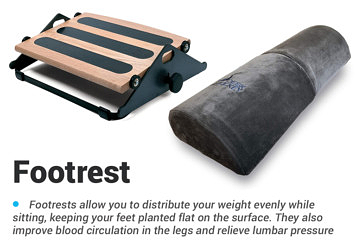
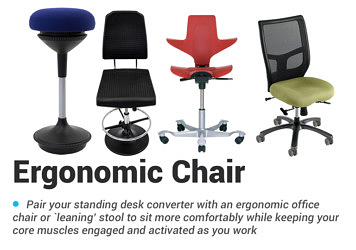
0 Comments
Leave a response >